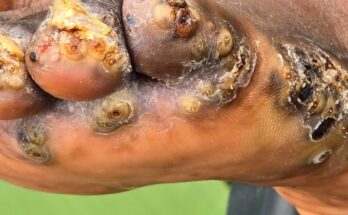Jiggers, also known as sand fleas or chigoe fleas, are tiny parasitic insects that burrow into the skin, especially on the feet. These pests cause painful sores, infections, and even deformities if left untreated. Cleaning a foot infested with jiggers is a crucial process that requires care, patience, and proper hygiene to prevent further complications.
The first step in cleaning a jigger-infested foot is soaking it in warm soapy water. This helps soften the skin and makes it easier to remove the embedded parasites. Adding antiseptic solutions like hydrogen peroxide or Dettol can further disinfect the area and reduce the risk of infection. After soaking, a sterilized needle or pin is used to carefully extract the jiggers. This must be done gently to avoid damaging the surrounding skin.
Once the jiggers are removed, the affected area should be thoroughly cleaned with antiseptic. Applying antibiotic ointment helps prevent infection, and bandaging the wounds ensures protection from dirt and bacteria. Proper foot hygiene is essential to promote healing. Regular washing with soap and water, wearing clean socks, and using closed shoes can help prevent reinfestation.
Prevention is key to avoiding jiggers. Keeping living areas clean, wearing protective footwear, and avoiding walking barefoot in infested areas can reduce the chances of getting jiggers. Additionally, communities in high-risk regions should educate residents about the dangers of jiggers and the importance of proper foot care.
Jigger infestations can lead to serious health issues, including secondary infections and mobility problems. Cleaning and treating affected feet promptly not only relieves pain but also restores confidence and dignity. By promoting hygiene and awareness, we can help eradicate jiggers and


